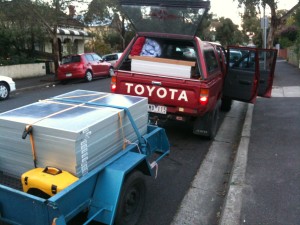 32 180 watt solar panels for $800
32 180 watt solar panels for $800
This post is about my power system, why I bought the panels, how I tested them and how I wired and mounted them.
Why I bought the solar panels?
My home is off grid and currently is pretty excellent from a power point of view. It has 20 acres of Forrest and wood heating. I have 2 gas cylinders and a gas cooker. I have a 12 volt power system at the house that provides light runs the water pump and allows me to charge my iphone. We have no TV (which I love) and a battery operated esky / radio (which I like and runs for ages on 2 AAA batteries). We have no fridge and I bought the panels so we could get one and have it run)
Our current power system
- 2 Solar Panels (120 watts max total output)
- 1 plasmatronics PL 20 solar controller (20 Amps max)
- 2 x 100 AH lead acid batteries
- 1 Powerdome (I use this for running my power drill and my macbook)
The new solar panels
These are the first solar panels I have bought they are 24 volt however it is basically 2 90 watt 12v volt panels side by side connected together in series which doubles the voltage to 24v.
How I tested the power output of my damaged solar Panels
To test the solar panels I took the voltage on one side of the connectors with some sun and successfully measured 12volts. Once I was happy that the cells were providing 12volts I then tested the power output.
To test the power output I bought hallogen car light (rated to 100watts) and plugged it into the circuit in series with my meter set to amps. In full sun I was able to read 7 amps of current.
Power (watts) = Volts * Amps so
84watts = 12V * 7amps (almost perfect!)
Once I had successfully tested the first panel that is when I went back yo ebay to buy the rest of the panels.
What I bought
I will be the first to admit it was a bit of an impulse buy (I really don’t need this many solar panels right now) but I thought at this price I could probably work out some things to do with them over the next 30 years.
- 32 180 watt Day4 Energy solar panels that have dropped by a forklift and as a result have the glass that is shattered
- Several lengths of extruded aluminum (bought from the nearby council refuse tip for $5)
- Several lengths of high current electricity cable (bought from the nearby council refuse tip for $2)
- 32 180 watt Day4 Energy damaged solar panels that have dropped by a forklift and as a result have the glass that is shattered
 32 of these solar panels weigh 1 metric tonne!
32 of these solar panels weigh 1 metric tonne!
How I changed the voltage of the first solar panel from 24 to 12 volts
Below is the junction box on the back of the solar panel that I rewired for 12 volts.
 During any wiring of the panel I put a towel over the panel to reduce output.
During any wiring of the panel I put a towel over the panel to reduce output.
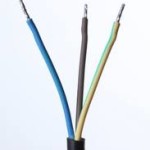 Voltage and Cables
Voltage and Cables
As I mentioned my system is a 12v system. The house is currently wired for DC 12 Volts (It has flourenscent and LED light globes). 12 Volts is good because you can run most items that run on DC on 12Volts including car and caravan appliances. In addition the house is wired for DC 12Volts so its the logical chice for my system.
However there are issues with 12Volts and this is why many solar panels tend to be 24Volts it is also why larger systems tend to be 48 or 96 volts. The reasons are due to the cost of the cables and electrical efficiency.
For example if I was to put all my panels on roof and wire them up at 12 volts on a sunny day my system would produce
180×32 = 5,760 watts
at 12Volts that means it would be delivering 480 amps of current. Compared to
- 10 Amps – Household extension cable
- 40 amps – Electric stove tops
- 80 Amps – Electric furnaces
- 300 Amps – THe cable used to connect a car battery to the car
 The danger of electrical shocks is a combination of voltage , amps and current types
The danger of electrical shocks is a combination of voltage , amps and current types
How to convert voltages from a solar system?
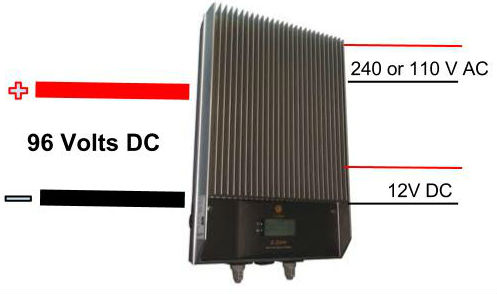 You need to use an inverter. Then you can generate mains electricity and also produce 12 V DC voltage. This does cause a loss in efficiency and the biggest problem is that the inverter has a limited life of around 10 years and high power inverters are pretty expensive.
You need to use an inverter. Then you can generate mains electricity and also produce 12 V DC voltage. This does cause a loss in efficiency and the biggest problem is that the inverter has a limited life of around 10 years and high power inverters are pretty expensive.
How I mounted and weather proofed my damaged solar panels
My current solar controller is rated to 20 amps and I decided to install 4 of the panels onto my roof. That should be enough to run a fridge and also more than enough to keep the batteries charged. I bought some scrap aluminium and bolted the panels to the roof.
Weather Proofing
My first solar panel had significant breakage of the glass. I was concerned about water getting into the panel for this reason I looked into different ways to weather proof them. Plastic films are not suitable as they deteriorate in UV. The best way to do it properly would have been to glue glass sheeting over the top. However this needs to be done with care as some glasses will have a large impact on the UV properties and efficiency of the panel. The glass can also be quite expensive.
I decided to go low tech and put gutter sealing tape on the large holes. I guess I’ll see if it works, if it doesn’t then I guess I’ve 27 more in the shed!
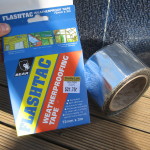
Solar panels and low light levels
Solar panels perform differently at low light levels the Day 4 panels are particularly good in low light. In low light my original solar system produced less than 0.3 amps. Once I put the new panels up in similar light conditions I got about 3 amps.
The future and my power system
As this was my first solar panel experience I am feel it went quite well. I will probably be buying a couple more batteries and getting that fridge. I would also like a to get a small generator (for power tools).
I am thinking of either building a new house and using the remainder of the panels on that or building a Solar pergola (basically a heavyweight pergola with a roof of solar panels) that way I could shade the north side of the property that would keep the house cool in the summer and provide a substantial frame for the 1 ton panels!
I hope you enjoyed my post. Please comment on it below if you have questions or anything you would like to say.
Click to see more posts about my country property


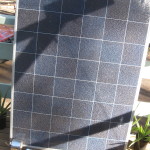
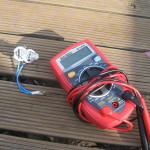
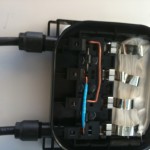

Hi Paul,
This is looking ace., you’re really getting in to this. you shuld talk to Laura as she is really into all this as well and has just got a place outside Edinburgh and is setting it all up.
Matt
I noticed in your post a picture of a solar panel PV junction box which is identical to the one I have. It shows copper ribbons attaches to four terminals. I have tried to attach ribbon cables to these terminals but there is apparently no release mechanism that opens the mouths of these connections. Can you tell me where this release mechanism is or a website that has instructions of how to connect ribbon cables? Thank you.
Hi Gerald
Are you talking about the wires I put in to convert the 24 volt panel to 12 volt? If yes I don’t think there is a release mechanism as such it is spring loaded. THe wires I inserted were solif (not multistrand) so was able to pull them out with long nosed pliers. I can imagine if you have used multistrand wire it could prove tricky to remove the wire (or to get it in for that matter.
Hope that helps
Paul